FIRST LOOK: Korg iPolysix for iPad
Does this synth emulation/music production environment deliver?
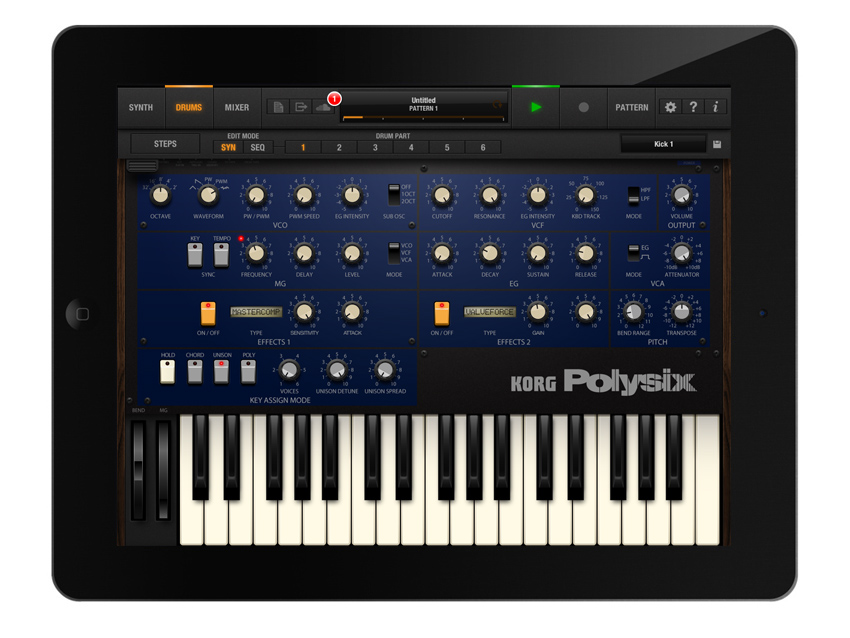
The end of an era... and the start of a new one
1982 was the end of an era for both synthesists and manufacturers. MIDI was just around the corner and the desire to provide affordable instruments would soon wipe clean once be-knobbed synthesizer front panels in favour of date-entry sliders and diminutive LCD displays.
Korg's Polysix was, in fact, one of the company's final adherents to analogue tradition. Its single VCO would be supplanted by digital variants in future instruments, and its generous complement of real-time controls would give way to silk-screened legending, LEDs and a mere smattering of buttons.
Yet sales of the Polysix would indicate that the design still held appeal for many musicians. And though it didn't break any new ground at the time, its simple design ensured that users could get a grip on programming the thing, all the while encouraged by its lively analogue sound.
That sound quality came courtesy of the same sorts of SSM chips used in Sequential Circuits’ lofty Prophet-5 and, even if the Polysix had nowhere near the depth of said instrument, it bettered its polyphony by exactly one, and could be had for a fraction of the price.
Fast-forward to the present. Korg is still around and the Polysix has managed to become something of a minor classic. Its parent company has resuscitated the P6 three times now: first in VST form (as a part of its Legacy Collection); then as a Reason Rack Extension; and now as an iOS synth for iPad and iPad Mini owners.
In theory, these tablets should offer enough screen real estate and power to recreate the Polysix's many parameter controls and sonics, so let’s find out if Korg’s latest app delivers.
NEXT: Synth emulation
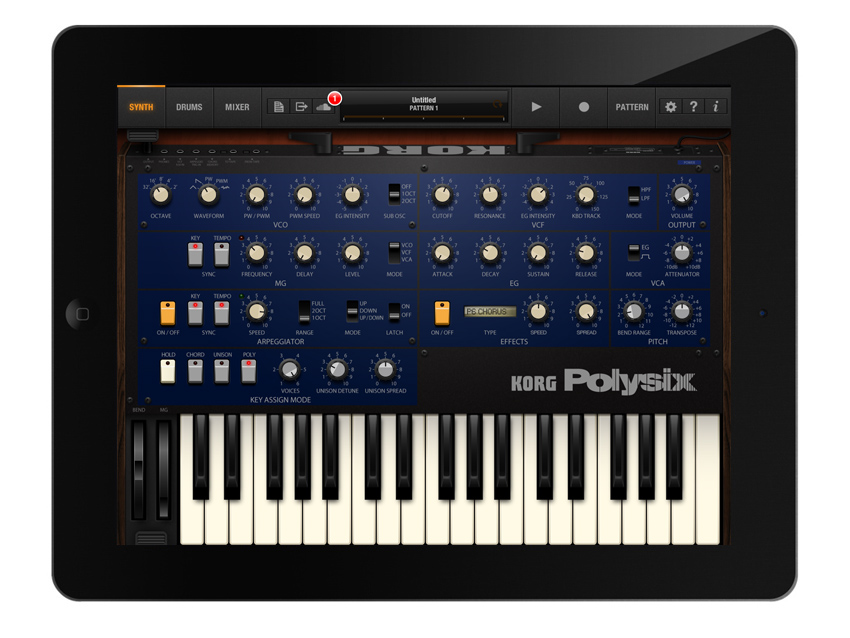
Synth emulation
The bargain polysynths of the ‘80s were by necessity stripped of luxuries like cross-modulation, filter envelopes and even that precious second oscillator, replaced by enhancements like sub-oscillators and arpeggiators. The Polysix had these, along with some gooey chorus/phaser/ensemble effects to fatten things up.
The iPolysix is outfitted in much the same way, though a few additional treats are bestowed upon the modern user. For instance, the filter can be switched from 24dB low-pass to a high-pass mode. However, you're still stuck with a single four-stage envelope generator, shared between filter and amp and VCO - this last destination an addition in the virtual incarnation. The LFO (here called MG) is likewise sparse, with a single sine wave shape. The MG can be routed to VCO, VCA or VCF.
Such meagre modulation facilities may seem crippling in light of modern miracle machines, but in fact, the limitations of both the original and its progeny are part of the appeal of these instruments. Even a novice can dive right in, tweak a few knobs and achieve passable - even superior - sounds.
The iPolysix sounds utterly authentic, with that characteristic richness in the low-mids that is the hallmark of a vintage analogue synthesizer. The sub-oscillator adds just the right amount of grunt where it's needed, and goes some way towards making up for the lack of a second oscillator. The oscillator itself is agreeably ordained, with triangle, sawtooth, pulse and PWM waves along with noise. The basics, then, and done right.
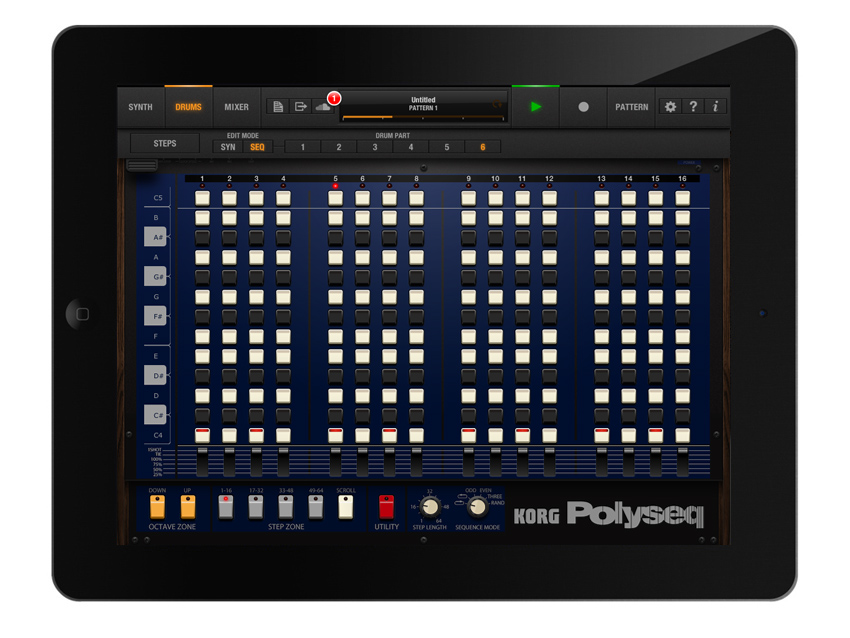
Step sequencer
If you've played with the sequencer in Korg’s iMS-20 app you have a head start on getting to grips with the one that’s included in the iPolysix. Like the iMS version, this one provides a combination of drum and synth tracks, with the former based on samples generated by the synth in play (in this case, a slight variation on the iPolysix itself).
The drum synth version ditches the arpeggiator in favour of an additional effects processor with sensitivity and attack controls. Though the intention is for you to create rhythmic parts, you can also use the drum synths to create pitched synthesizer sounds for a full eight-track synthesizer ensemble. You can have up to six drum tracks in a sequence and two full-blown synthesizer tracks.
Both synths and drum synths are loaded with factory sounds to get you started. The sequencer is a pattern/song-based thing, with each pattern capable of storing up to 64 steps. You can play the pattern forwards, backwards, on only the odd or even notes, every third note, or in random order. You can have up to 32 different patterns per song, up to 100 measures in length. Enough for a full electronic production, in other words.
Synthesizer (but not drum synth) parameters can be automated. Tapping and holding any parameter brings up an automation grid up to 64 steps in length, into which you can draw your parameter values for a given step. This applies to any parameter, even things like MG sync and waveform selection. Better still, it applies to the effects, both the synth's and the mixer section's. Sweet.
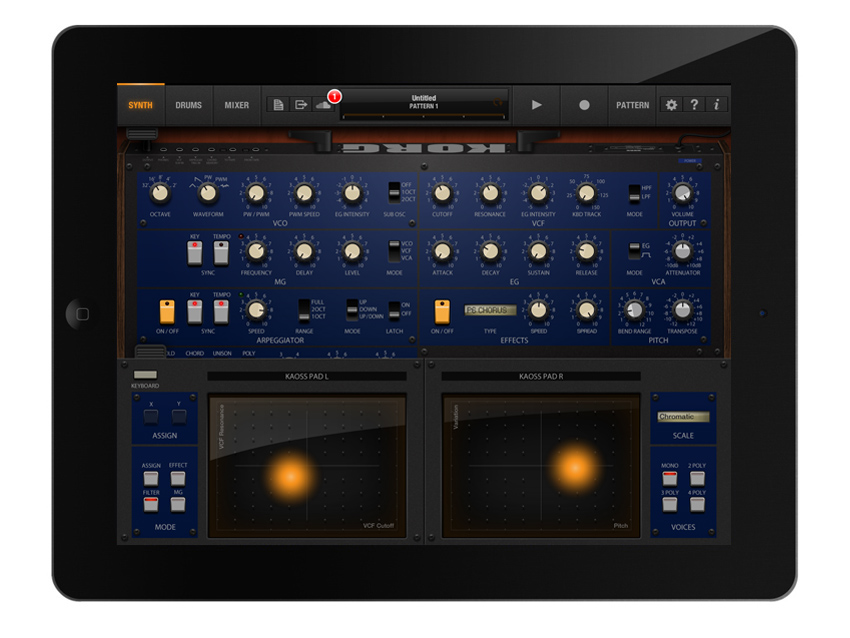
Control
Playing a keyboard from the iPad's touch screen is always a bit of a risky proposition. Tiny keys with no tactile separation means that all but the extremely dexterous are likely to experience missed and doubled notes.
Korg has done its damndest to ensure a smooth playing experience, though. The three-octave keyboard can give way to a user-sizable version with thin, normal and thick options (describing the keys, that is, not the users. Ahem.) A slider and octave buttons allow for scrolling up and down the key range.
Additionally, there’s a pair of KAOSS Pads, one of which triggers notes or chords in any of 35 selectable scales set to any of a dozen root keys. In other words, you needn't be blessed with tiny digits nor, in fact, a heck of a lot of musical skill to get good results out of the iPolysix.
Users of iPads 1, 2 and 3 can, of course play the instrument from an attached MIDI controller, either USB via the Camera Connection Kit or using a dedicated device like the IK Multimedia iRig Keys or Akai Synthstation 49 (though the iPolysix is not specifically designed for Synthstation compatibility as some other synths are).
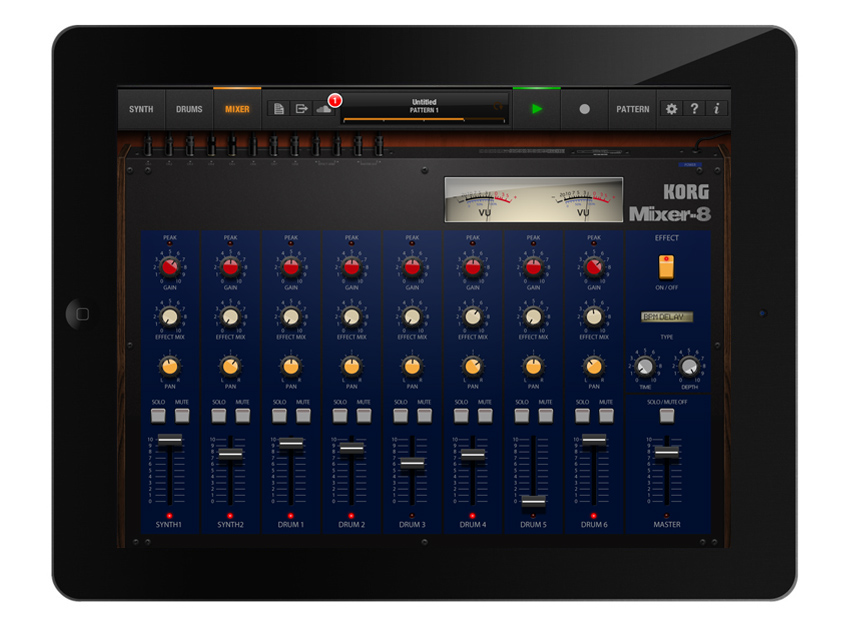
Music production
Once you've got your sequencers and sounds going you can mix them with the retro-styled mixer. With two synth channels and six more for the drum machine, you get the basics: solo, mute buttons, pan, gain and effect mix knobs, along with a volume slider for each channel. A master level and solo/mute button are provided, along with a button for switching the selected effect in or out.
28 different effects types are available, including the usual reverb, delay and distortion jobs. There are also filters and dynamics. The comb filter is an unexpected treat. Effects can be edited with two knobs in the master channel, the roles of which vary depending on the selected effect.
When you have a finished track, you can share it with other apps via AudioCopy, iTunes or make use of Korg's PolyStage, a SoundCloud-based community sharing service.
Oh, and WIST is supported, naturally, and though it's not mentioned in Korg's press, we had the iPolysix playing via virtual MIDI from the Little MIDI Machine sequencing app running on the same iPad.
Listen to the iPolysix in action

Early verdict
With the iPolysix Korg has, once again, knocked it out of the park. By combining a simple classic with a multitrack sequencer and good effects, KAOSS pads and automation, it’s offering a mini electronic music studio that will please both seasoned synthesists and the greenest iOS musicians.
The sound quality is astonishingly good and the interface relatively easy to understand. If you get stuck, you can consult not only the included iPolysix manual, but also the original Polysix docs as well. Best of all, it's half price until the end of December, so get on over to the App Store and get yourself an early Christmas present.